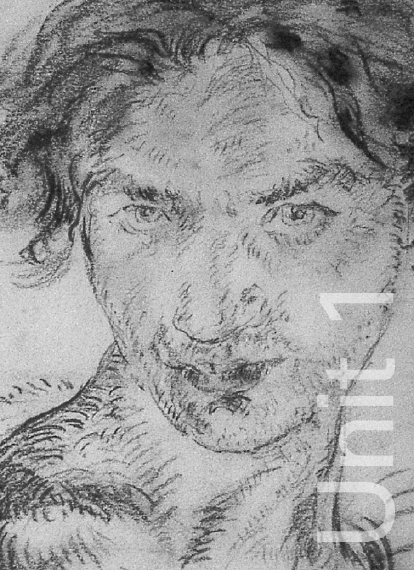 |
Home |
UNIT 1A - SELF PORTRAIT
ABOUT THE UNIT
In this unit children make a self-portrait to communicate ideas about themselves.
They talk about images of children in drawings, paintings and photographs and artists’ self-portraits in order to develop ideas about how they will portray themselves. They investigate a range of drawing materials and techniques and learn how to mix and use colour in a painting.
There are only two self-portraits in the collection – the rest of the work chosen for this unit includes a selection of faces and a variety of drawing materials and techniques used to record them. These portraits obviously do not include profiles but concentrate on the sort of image one might see when looking in the mirror to compose a self-portrait.
UNIT 1B INVESTIGATING MATERIALS
ABOUT THE UNIT
In this unit children investigate the qualities of a variety of natural and made materials. They learn skills for weaving and gain sensory experience of materials and an understanding of colour and texture. They learn about how textiles are used in their own and others’ lives.
UNIT 1C WHAT IS SCULPTURE?
ABOUT THE UNIT
In this unit children develop their understanding of shape, form, texture and the sensory qualities of materials. They learn about the work of sculptors and about different kinds of sculpture, including those made of natural materials. They also learn skills for arranging materials they have collected to make a relief collage and a sculpture.
Show the children a variety of examples of sculpture, ask them to try to explain what sculpture is and what a sculptor does. Find different types of sculptures in the Garman Ryan Collection i.e. carved sculptures and modelled sculptures, cast sculptures, constructed sculptures. Look at the sculptures, make sketches, make notes (e.g. materials used, size, modelled or carved etc) and take photographs. The Garman Ryan collection offers a wonderful selection of sculptures in many different materials and cultures from all over the world. There are also contemporary constructed sculptures in the Discovery Gallery. Look at and draw ‘Beast’ by Laura Ford (Discovery Gallery) and ‘Alien’ by Yinka Shonibare (Discovery Gallery).
Your pupils can use the interactive Frisky Doggy Bag on a visit to the gallery that looks at materials used in sculpture in the animals room of the Garman Ryan Collection.
Follow up by designing and making constructed animals or monsters out of reclaimed materials (junk, cardboard boxes etc.) or brightly coloured fabrics sewn/stapled and stuffed (with glued-on details – eyes etc.) The Haida Eagle is from the Haida People who also create totem poles. Constructed sculptures can be made and fitted together to create a totem pole.
The Garman Ryan Collection offers a wonderful selection of bronze sculptures by Jacob Epstein. The process of casting can be linked to the science curriculum through the use of liquids and solids. Explore casting back at school by creating a design in plastercine and casting it with plaster of Paris, or with an impression of pupils hands or feet in soft clay, or a combination of both! Natural materials collected and pressed onto the plastercine can also be cast.
It would be useful to use this unit to look at how figures can be represented in sculptural form by introducing the largest collection of the work of Jacob Epstein, a pioneer of modern British sculpture. Pupils could be asked to consider how they would choose subject matter if they were sculpting figures – would they sculpt someone famous or make up a person, perhaps an imaginary friend or monster or would they choose family or friends. Why would they make that choice? Would they choose someone they consider interesting, beautiful, handsome, ugly, or nice?
Jacob Epstein’s work could be used to introduce the ‘Garman’ and ‘Ryan’ who set up the Garman Ryan Collection.
|
Home |
A resource web for art teachers using the Garman Ryan Collection and the New Art Gallery Walsall, England as a source of inspiration for the delivery of the QCA National Curriculum 2000 art schemes of work to pupils in Key Stages 1-3 |